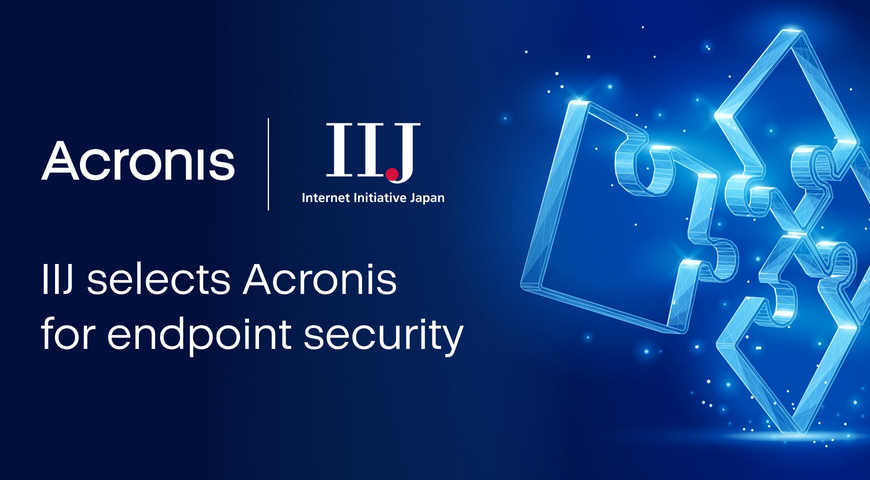Competition for Microsoft Windows backup customers is tough, forcing backup vendors to come up with new solutions to win more business. Well, competitors are not sleeping, and Veeam Agent for Microsoft Windows 2.0 has just hit the market. Another vendor, another solution — but how does it compare to the small business’ favorite Acronis Backup 12.5? Well, let’s find it out.
We are going to look at the new Veeam Agent for Microsoft Windows 2.0. This is a new product for backing up disks/volumes or files and folders from a single physical machine with the help of Microsoft Volume Shadow Copy Service, or VSS. As you may have noticed – yes, it is for the protection of Windows systems. But, wait a minute, there are many different Windows systems, what exactly does this new solution support? Well, it supports workstations and servers with three different editions - Free, Workstation and Server. However, for extra functionality, Veeam Agent for Windows 2.0 must be coupled with Veeam Backup&Replication, which adds complexity and extra cost. Yes, these agents could be used as standalone solutions, but their functionality is limited by design. For example, if you want to make application-aware backups – you can only do so by using Server edition license. From the restore point you can make the restore with the free edition (but to make the backup which you can restore you need to pay) or use Veeam B&R with embedded application explorers. If you want to have Instant Recovery functionality – again, you can achieve it only together with Veeam Backup&Replication (Hyper-V only, not VMware, according to their datasheet).
Also, as events of some last days show, even if the system is outdated and not supported by its parent vendor anymore, it can still be used by many businesses. In fact, it requires even more protection! Recent WannaCry ransomware is a good example — it has been attacking many legacy systems, such as Windows XP, Windows Server 2003 and Windows Vista since May 12, 2017 – and it still continues to do so. Unlike Veeam, Acronis Backup 12.5 supports most legacy operating systems and even offers Acronis Active Protection™ to protect data from ransomware as a bonus. So, even with the latest updates – Veeam Agent for Microsoft Windows 2.0 is out of the game here based on the information described in their datasheet. To be short: Acronis supports the legacy systems mentioned earlier – Veeam does not. It could be meaningless for some, but a life of difference for others.
Another important differentiator is the ability to backup network-attached folders. In many cases, we access and work with network folders – and contents of such folders may be very important to us. Wouldn’t it be great to have an ability to protect these destinations too, in conjunction with the primary Windows assets? Unfortunately, Veeam Agent for Microsoft Windows 2.0 is not capable of doing so, but Acronis Backup 12.5 is! So, we can easily back up not only the system we work with but also the network folders and files connected to such system. This is just a simple example based on the official datasheets, which you can obtain on Veeam’s website.
Backup consistency check is another important feature in business backup software. Acronis Backup 12.5 is capable of backup verification. But Veeam Agent for Microsoft Windows 2.0 by itself is not. Again, it needs to be integrated with Veeam Backup&Replication, and even then, it is not 100% clear if such functionality is available to users.
We live in a heterogeneous IT world and flexibility is very important. Users should be able to store their backups not only locally, but also on network shares: SMB or NFS, or even in the cloud. Well, according to the product manual, Veeam Agent for Microsoft Windows 2.0 only supports SMB shares while Acronis Backup 12.5 can store backup data in both SMB targets and in Acronis Cloud Storage. Real flexibility in your real environment!
The other benefit of having flexibility is the ability to restore assets to different hardware or destinations with an option to move data between different environments — P2V, V2P or V2V. Acronis Backup 12.5 is the best choice in this case because Veeam’s solution does not support any of such conversions even in conjunction with Veeam Backup&Replication. Sometimes there is a need to restore data to storage drives with different capacity where the target drive is much smaller than the original partition. Resizing partitions during the restore is a nice cure, which the Veeam’s solution doesn’t provide.
The ability to restore the backup as a virtual machine is another feature that is absent from Veeam Agent for Microsoft Windows 2.0. With Acronis, it’s easy. Users can easily mount backup as Hyper-V or ESX virtual machines, receiving access to the protected data in seconds.
Well, let me conclude and highlight the main points:
- Acronis supports legacy systems and offers protection against ransomware – Veeam does not.
- Acronis backs up network folders – Veeam does not.
- Acronis verifies backups – Veeam does not.
- Acronis is able to back up to different network shares and to the cloud – Veeam is limited here.
- Acronis makes application-aware backups – Veeam is limited here and requires Server edition or Veeam Backup&Replication with dedicated explorer tools, increasing complexity.
- Acronis offers tools for centralized management – Veeam does not.
About Acronis
Acronis is a Swiss company, founded in Singapore. Celebrating two decades of innovation, Acronis has more than 1,800 employees in 45 locations. The Acronis Cyber Protect Cloud solution is available in 26 languages in over 150 countries and is used by 20,000 service providers to protect over 750,000 businesses.





